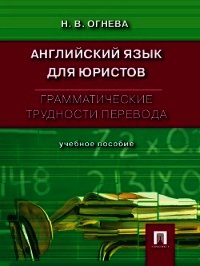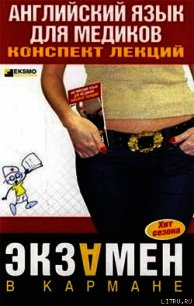Английский язык. Практический курс для решения бизнес-задач - Пусенкова Нина (читать книги .txt) 📗
maintain v – поддерживать в рабочем состоянии, ремонтировать
29. revenue n – выручка
30. negotiation n – переговоры
negotiator n – переговорщик
negotiate v – вести переговоры
31. defense n – оборона; оборонная промышленность
32. bond n – зд. облигация
33. human relations (HR) – отношения с сотрудниками
34. job evaluation – оценка результатов работы сотрудника
35. stock option – опцион на акции
36. vice-president (VP) – вице-президент
37. base salary – базовая зарплата
38. exercise n – упражнение; осуществление, использование (права), исполнение опциона
exercise v – упражняться; осуществлять, использовать (право), исполнять опцион
39. stock market – фондовый рынок
40. Сhief Financial Officer (CFO) – главный финансовый директор
41. assignment n – задание; уступка; назначение; поручение
assign v – назначать; поручать; уступать
42. appointment n – назначение; должность; встреча, прием
appoint v – назначать, утверждать; договариваться (о встрече), назначать встречу; предназначать, отводить
43. staff n – штат, персонал
Jack Welch’s Leadership Principles
– Face reality as it is, not as it was or as you wish it were;
– Be candid with everyone;
– Don’t manage, lead;
– Change before you have to;
– If you do not have a competitive advantage, do not compete;
– Control your own destiny, or someone else will.
Exercise 1. Answer the following questions.
1. Why is Jack Welch considered the greatest corporate leader of the 20th century? 2. How did he achieve such a tremendous success in creating shareholder value? 3. What was he focused on? 4. How did he manage to combine a small-company environment with big-company resources? 5. Was Welch a firm believer in human creativity? 6. What is Six Sigma program and what benefits did it bring to GE? 7. How did Welch interact with his people? 8. How did he use rewards to drive performance? 9. How did Welch promote people?
Exercise 2. Describe a great manager that you know or that you’ve read about and identify features and characteristics that make him or her great.
Exercise 3*. Answer the following multiple-choice question.
What makes the following persons world-famous?
Henry Ford I
1. He invented and introduced an assembly line.
2. He began to pay his workers $5 per hour thus creating potential consumers of his cars.
3. He drastically improved productivity and cut costs in his enterprises.
4. He believed that the more you criticize your people the worse they work.
5. All of the above.
6. None of the above.
Pavel Tretiakov
1. He headed a highly profitable timber-processing factory.
2. He was a major sponsor of art.
3. He developed and commercialized nylon.
4. He acquired oil fields in Baku from the Nobel family.
Lee Iacocca
1. He is the pioneer of venture capitalism in the US.
2. He developed the U.S. anti-monopoly legislation.
3. He turned Chrysler around and saved it from bankruptcy.
4. He launched the first mini computer.
Steve Jobs
1. He founded Apple Computers.
2. He was the richest tycoon in the world.
3. He was CFO of General Motors.
4. He developed and promoted equity theory of motivation.
Vagit Alekperov
1. He is CEO of one of the biggest Russian oil companies.
2. He was at the helm of LUKOIL for two decades.
3. He was very successful in internationalizing LUKOIL’s business activities.
4. He is one of the most influential business leaders in Russia.
5. All of the above.
6. None of the above.
Exercise 4*. Fill in the blanks using terms given below.
Who is Jack Welch?
Jack Welch is the most admired……. in the world. His 20-year reign as the head of General Electric………. the company from the bureaucratic behemoth to dynamic and revered powerhouse. During his tenure, GE……… grew from $13 billion to $500 billion. In the process, Welch’s management………. have made him the most influential business leader of his era.
In April 1981, Welch assumed the helm of GE and it was here that his… would begin. First, he adopted a strategy that each…….. must be #1 or #2 in their markets – or in his memorable phrase, they would need to «fix it, sell it, or close it.» Within five years, one of every four people would leave the GE………, 118,000 people in all, including 37,000 employees in businesses that were sold. The……… and closures that resulted earned him the now well-known moniker, «Neutron Jack.»
While the media attacked his policies, Welch remained……… on the job at hand. After visiting a Japanese manufacturing plant in the mid-1970’s he found himself awed by their……. The awe gave way to fear that the Japanese would be a threat, as they tore apart the…… in industry after industry. It was the search for a business safe from the perceived Japanese threat that led Welch to…… RCA for $6.3 billion in 1985.
Welch made GE a people company where ideas flourished and boundaries disappeared. Welch pressed his theory of a «Boundryless» culture in which all levels of the company participated in innovation and………. Ironically, in growing this people culture, he adopted a way of……… his employees that could seem brutal. He ordered all 4,000 managers in the company to make……….. annually. Everyone was to identify the top 20% of…….. to be nurtured and strongly………..; the middle 70% were the strong workers who were the heart and soul of operations; and the remaining 10% were those that either needed to be improved or eliminated.
In his second decade, Welch focused on four basic initiatives: Globalization, Services, Six Sigma, and e-business. During globalization, Welch traveled the world…………. in such countries as China, in Japan, in India, and in Hungary. The services division, meanwhile, grew from $8 billion in 1995 to $19 billion in 2001 under Welch’s……….. The Six Sigma effort, a mathematically grounded program that improves processes, decreases variance, and creates more perfect products while………, was……….. in 1996. Finally, in e-business, Welch came to recognize the enormous impact this technology would have on the company as it allowed GE to expand its markets, find new…………, and make its…………. more global.
Terms:
leadership, customers, payroll, rewarded, CEO, closing deals, reducing costs, acquire, focused, job evaluations, innovations, division, layoffs, cost structure, problem solving, differentiating, launched, suppliers base, market value, staff, efficiency, transformed, legacy
Exercise 5. Translate into English (continued from lesson 3).
Ли Якокка эффективно возродил «Крайслер». В течение трех лет он сократил 33 из 35 вице-президентов. Ему пришлось уменьшить размеры компании, уволив множество рабочих, менеджеров и бо€льшую часть центрального аппарата, при этом устранив несколько уровней управления. Когда дела в компании шли особенно плохо, чтобы показать, что все находятся в одной лодке, Ли Якокка урезал свою зарплату до символического 1 доллара в год, до тех пор пока финансовое положение компании не улучшится.
Ли Якокка изменил принципы работы компании с дилерами, наладив сотрудничество между ними и сбытовиками «Крайслера». Он успешно использовал новаторский маркетинговый прием – продавал автомобили фирмам, сдающим машины напрокат, тем самым обеспечивая себе косвенную рекламу среди клиентов, которые брали их в аренду.




